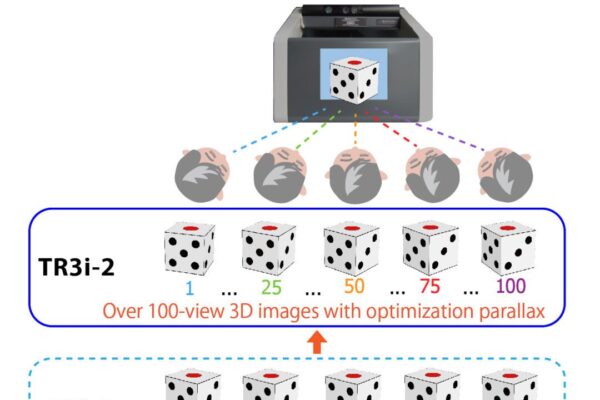
Glass-free 3D display relies on eye-tracking to orient pixels
This 3D eye-tracking system achieves smooth and realistic 3D images, without the use of glasses, by combining NLT’s proprietary 3D image processing engine, called “Truly Realistic 3D imaging” (TR3i-2), with the company’s high density autostereoscopic display method called “Horizontally x Density Pixels” (HxDP), along with an eye-tracking device that detects the observer’s eye position with a high level of accuracy.
Recently, the company says, the demand for autostereoscopic displays has been growing not only for use in consumer games, smart phones, and televisions, but also in professional applications such as medical and educational equipment.
This is attributed to the increasing opportunity to use high quality autostereoscopic images, which create a sense of depth, due to the increasing use of stereo cameras in certain applications such as in endoscopic instruments. The industrial market has also recognised the value of 3D technology for various applications. However, there have been some issues that limit the value of 3D technology, such as ghost images, image reversal, and the limitation of suitable 3D viewing space.
To address these issues, increasing the number of viewing points on a multi-view autostereoscopic display will broaden the suitable viewing space and reduce image reversal. However, increasing the number of viewing points also decreases the density of the 3D image.
So, it is difficult to both minimise image reversal and achieve a high density 3D image. NLT claims to have resolved this dilemma without using a multi-view 3D display – using only a 2-view 3D display with HxDP technology, the 3D image processing engine called “TR3i-2”, and an eye-tracking device. This system monitors the observer’s eye positions, and varies binocular parallax based on the viewing angle without decreasing the density of the 3D image.
The TR3i-2 converts stereo images, optimised for the characteristics of the autostereoscopic display, to correspond to the observer’s eye position, which is detected by the eye-tracking device. With TR3i-2, it is now possible to provide 3D images that can be comfortably viewed without the problems of ghost or reverse images.
TR3i-2 can optimise arbitrary viewpoints to reduce the influence of 3D-crosstalk and to display motion parallax. The system monitors the observer’s eye positions and varies binocular parallax based on the viewing angle.
NLT’s HxDP technology is a unique autostereoscopic display system that achieves high density 3D images by using a unique pixel alignment. The combination of the new TR3i-2 3D image processing engine with the high density HxDP technology makes it possible to achieve more natural and seamless autostereoscopic images by minimising the influence of changes in the observer’s viewing point.
Tianma NLT America; www.tianma-nlt.com
 If you enjoyed this article, you will like the following ones: don't miss them by subscribing to :
eeNews on Google News
If you enjoyed this article, you will like the following ones: don't miss them by subscribing to :
eeNews on Google News



